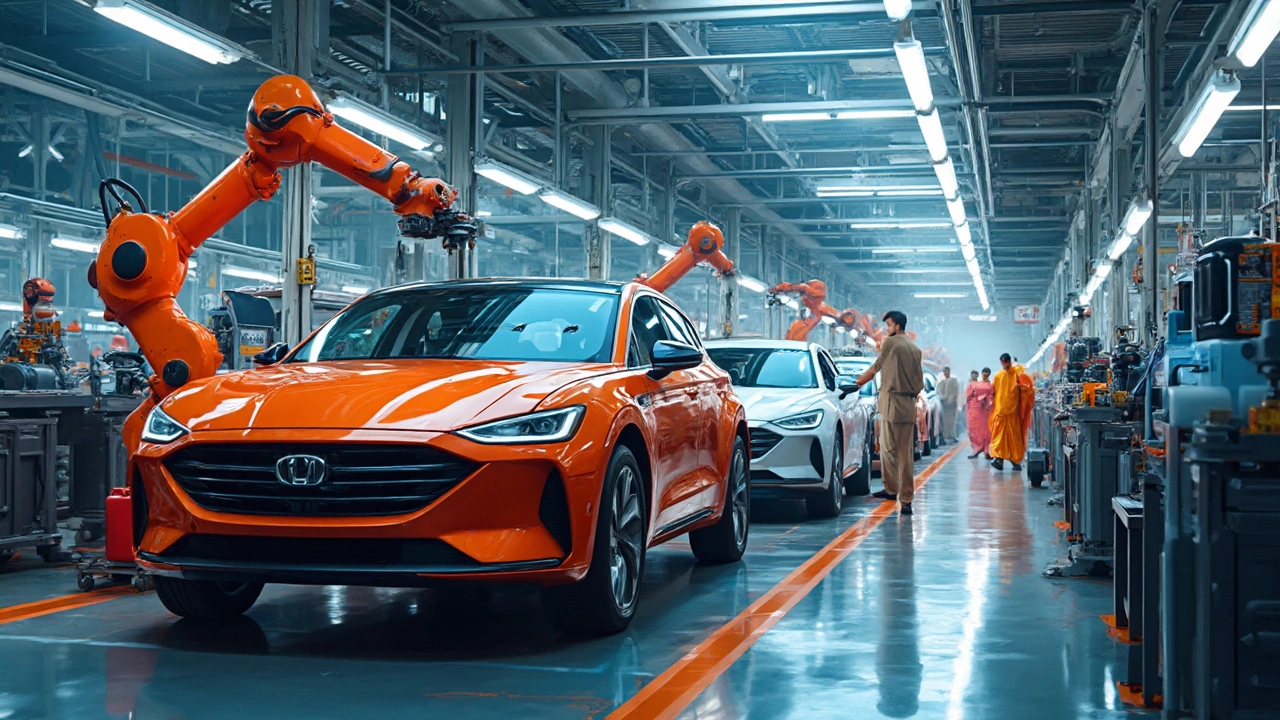Indian Car Industry – What’s Driving the Boom?
India’s car market isn’t just big; it’s booming. In the past five years, vehicle production jumped by more than 30%, and the number of new registrations keeps climbing despite economic ups and downs. Why? A mix of rising incomes, urbanization, and government policies that make buying a car more affordable.
Key Players and What They’re Doing Differently
Maruti Suzuki still tops the sales chart, but brands like Hyundai, Tata Motors, and Mahindra are closing the gap with local‑focused models. Toyota, for example, has become a favorite among Indian families because of its reliability, low resale value, and fuel‑efficient diesels. The brand’s success isn’t just a luck‑factor; it tailors features—like rugged suspension for rough roads—and sets up an extensive service network that eases buyer anxiety.
Meanwhile, new entrants such as Kia and MG are betting on premium designs and connected car tech to attract young buyers. Their strategy shows that the Indian market now values style and digital features as much as price.
Regulations Shaping the Road Ahead
The shift from BS4 to BS6 emission standards in 2020 forced manufacturers to upgrade engines, invest in cleaner tech, and scrap older models. This move cut pollution but also raised vehicle prices slightly. For many buyers, the trade‑off feels worth it because BS6 cars run smoother and need less fuel.
Another rule that often pops up in conversations is the “25‑year rule” for imported used cars. Importers must bring cars that are at least 25 years old, which keeps the market from being flooded with cheap foreign models and protects domestic manufacturers. The rule also creates a niche for classic car enthusiasts who import vintage rides for hobby or resale.
These policies, while adding short‑term costs, push the industry toward innovation—electric vehicles (EVs) are now getting serious attention. The government offers subsidies for EV buyers and aims to have 30% of new cars electric by 2030. Companies like Tata Motors and Mahindra are already rolling out affordable EVs to capture that upcoming demand.
So, what does all this mean for you? If you’re thinking of buying a car, you now have more choices than ever: a reliable Toyota for the family, a tech‑savvy Kia for city life, or even an electric hatchback that saves on fuel and taxes. If you’re a business owner, the expanding auto parts sector offers opportunities to supply components for both ICE and EV models.
Bottom line: the Indian car industry is in a sweet spot of growth, regulation, and tech adoption. Whether you’re a buyer, seller, or just curious, keeping an eye on these trends will help you make smarter decisions on the road ahead.

Richest Car Company in India: Who Tops the List?
India's car manufacturing industry has seen substantial growth, with several companies vying for the top position. This article explores which company is currently the richest, based on revenue and market share. We delve into interesting facts about these companies and examine what makes them stand out. Discover tips on why these car companies succeed and how they impact India's economy. You'll gain insights into the Indian automobile landscape and learn about what drives its leading players.
